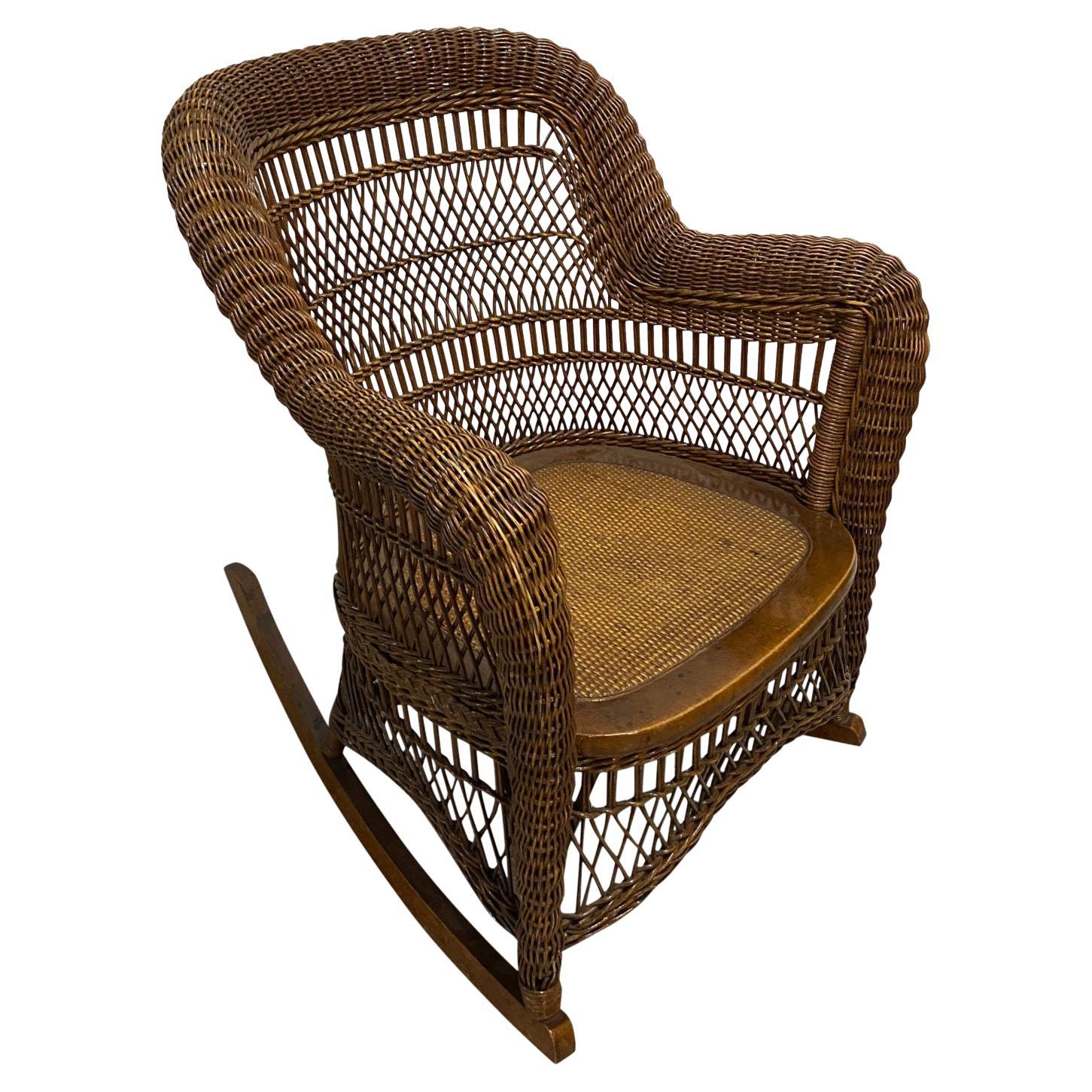Crafting and Care of an Old Blue Wicker Rocking Chair

Restoring an old blue wicker rocking chair can be a rewarding project, revealing the hidden beauty and history within its aged frame. The process requires patience, attention to detail, and a blend of traditional craftsmanship and modern techniques. The following sections detail the steps involved in repairing, cleaning, protecting, and reupholstering your cherished piece.
Repairing and Restoring Damaged Wicker, Old blue wicker rocking chair
Repairing damaged wicker involves identifying the type of damage, sourcing appropriate materials, and employing the correct techniques. Common issues include broken or loose wicker strands, damaged joints, and loose or missing weaving. For broken strands, you’ll need replacement wicker of similar color and thickness. This often requires sourcing from specialized suppliers or carefully removing strands from less visible areas for matching. Securing loose strands may involve using strong, flexible glue specifically designed for wicker, or re-weaving the affected area if the damage is extensive. Damaged joints can be reinforced with wood glue and small wood dowels, carefully inserted and allowed to dry completely. Missing sections may require more advanced weaving skills, or professional assistance. Remember to always work slowly and methodically, taking your time to ensure the repair is both strong and aesthetically pleasing.
Cleaning and Maintaining Wicker
Regular cleaning is crucial for preserving the appearance and longevity of your wicker rocking chair. Neglecting this can lead to the build-up of dirt, dust, and grime, potentially causing damage to the wicker and affecting its structural integrity.
- Dusting: Regularly dust the chair using a soft brush or cloth attachment on a vacuum cleaner. This prevents dust from accumulating and embedding itself in the wicker.
- Spot Cleaning: For minor spills or stains, gently blot the affected area with a damp cloth and mild soap. Avoid harsh chemicals or abrasive cleaners.
- Deep Cleaning: For a more thorough cleaning, consider using a solution of mild soap and warm water. Apply the solution using a soft brush, then rinse thoroughly with clean water and allow the chair to air dry completely. Avoid getting the wicker excessively wet, as this can damage it.
- Protecting from UV damage: Applying a UV protectant spray specifically designed for wicker can help prevent fading and deterioration from sun exposure.
Protecting the Rocking Chair from the Elements
Exposure to the elements can significantly damage a wicker rocking chair, causing fading, cracking, and weakening of the wicker. Taking preventative measures is vital to its long-term preservation.
- Storage: Store the chair indoors during periods of inclement weather or prolonged sun exposure. A cool, dry location is ideal.
- Covering: When outdoor storage is unavoidable, use a breathable cover specifically designed for outdoor furniture. This protects against rain, snow, and direct sunlight.
- UV Protection: Apply a UV-resistant sealant or varnish designed for wicker to protect it from the harmful effects of the sun. Reapply as needed, following the manufacturer’s instructions.
- Regular Inspection: Regularly inspect the chair for any signs of damage, such as loose wicker or structural weakness. Address these issues promptly to prevent further deterioration.
Reupholstering the Cushion
Reupholstering the cushion allows for personalization and rejuvenation of the rocking chair. Choose a fabric that complements the chair’s blue wicker, considering durability, comfort, and weather resistance for outdoor use. Measure the existing cushion carefully before purchasing new fabric.
- Remove the old fabric: Carefully remove staples or tacks securing the old fabric to the cushion frame.
- Measure and cut the new fabric: Cut the new fabric slightly larger than the cushion frame to allow for seam allowances.
- Attach the new fabric: Secure the new fabric to the cushion frame using staples or tacks, ensuring even tension and a neat finish. Consider using a staple gun for ease and precision.
- Fabric Options: Consider durable outdoor fabrics like Sunbrella or other weather-resistant materials for outdoor use. For indoor use, explore a range of colors and textures, from cotton and linen to velvet or faux leather.
